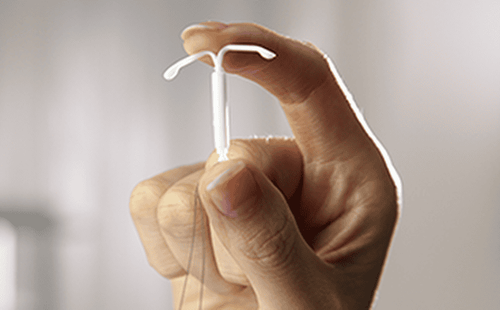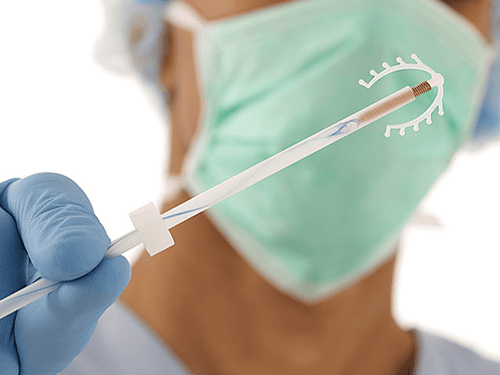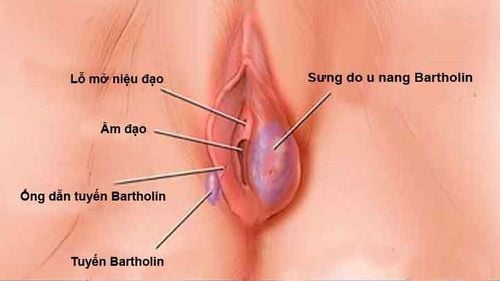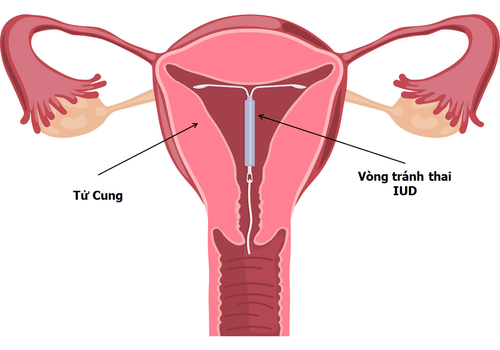This is an automatically translated article.
Recently, many maternity hospitals have recorded some cases of uterine perforation when removing the IUD or after the IUD is inserted. So is uterine perforation dangerous and what should women do?1. Uterine perforation after IUD insertion
IUD insertion is a safe and effective birth control method, trusted by many married women. Although the procedure for IUD insertion is quite simple and easy to perform, there is still a risk of the ring perforating the uterus and entering the abdomen, forcing the patient to be hospitalized for surgical removal. Most cases of women with uterine perforation after IUD insertion usually occur in health care centers of small wards and communes. Here, the condition of equipment is still inadequate, combined with a few medical staff who are not yet experienced enough to do so, which easily leads to negligence.Many women have severe abdominal pain a few hours after going home to put on the IUD, but they mistake it for normal symptoms when they first put the ring in, because the body has not yet adapted. Until the abdomen became increasingly painful, to the point of being unbearable or unable to stand up and accompanied by vaginal bleeding, the patient returned to the medical facility to check if the ring placement was correct.
Results of examination, combined with ultrasound and X-ray at the obstetrics department showed that no intrauterine IUD was detected. At this point, the patient just learned that the ring punctured the uterus, penetrated the muscle and entered the abdomen.
Answering the question "What to do with a perforation of the uterus?", the doctors said that it was necessary to have a laparoscopic surgery to remove the ring from the abdomen and burn it to stop the bleeding. Before carrying out surgery, the patient needs to do a necessary test as well as have the signature of a family member to consent to the surgery.

Thủng tử cung sau đặt vòng thì phải làm sao?
2. Stick the IUD to the uterine muscle
Besides perforation of the uterus after IUD insertion or removal, obstetricians and gynecologists have also recorded cases of patients leaving the IUD for 10 years in the uterus, causing the device to "break the wire" and stick to the muscle. . According to the manufacturer's instructions, IUDs should usually only be placed in the uterus for about 5 years, then they must be replaced with a new device to ensure quality, as well as contraceptive effectiveness and avoid complications due to the IUD. long in utero.But in fact, many women can still lead normal activities after the T-shaped IUD is placed, so they don't often go to gynecological exams, even forgetting the existence of an IUD during pregnancy. body. When women are older and no longer need contraception, women go to the hospital to remove the ring, only through ultrasound it is discovered that the T-shaped contraceptive device shows signs of sticking to the uterine muscle.
Moreover, the procedure of removing the IUD with "broken cord" attached to the uterine muscle for more than 10 years has many risks such as: tearing the uterine cavity, perforating the uterus, bleeding in the uterus. Vaginal bleeding leads to blood loss,... Therefore, the medical team and midwives need to predict the situation, and explain and encourage the patient before deciding to proceed with the procedure of "removal of the ring". If the procedure is successful, bleeding and shock are closely monitored, the patient needs only a short rest to recover completely and be discharged.
3. Beware of complications when inserting an IUD
Each type of IUD will have a certain shelf life of 5 - 10 years depending on the manufacturer, but in fact, many women still keep the ring in the uterus for a long time, even after menopause. when retired. Obstetricians and gynecologists said that if a woman puts an IUD on for too long compared to the prescribed time limit or has technical negligence during the insertion process, she will face risks such as:Sticky ring into the uterine muscle due to prolonged placement; Ring fracture and perforation of uterine muscle; Placing the ring in the wrong position, causing tearing of the uterus and causing the ring to enter the abdomen; Unintended pregnancy due to misplaced or expired ring.

Mang thai ngoài ý muốn do đặt lệch vòng là một trong những nguy có thể gặp
4. Note when inserting the IUD
Usually an IUD is indicated for women who have had at least 1 child. Regarding the IUD insertion process, doctors recommend women:Completely cure all gynecological diseases before placing the IUD; Postpartum IUD insertion time is usually at least 6 weeks; Women after cesarean section (surgery to take the baby) should examine and ask their doctor for advice on safe IUD insertion conditions before deciding to have the procedure; Periodically visit the clinic every month to check the position of the ring (at the time of menstruation) in the first 3 months after the procedure; Then check every 3 - 6 months to promptly handle if any abnormality occurs; Remember the time and carefully store the ring order form for easy tracking; Replace the IUD with a new one after 5 - 10 years under the guidance of an obstetrician-gynecologist. In addition, to avoid complications caused by the ring, you absolutely must not put on an IUD when:
Pregnant or suspected of being pregnant; Having an infection of the genital tract; Abnormal genital bleeding of unknown cause; Postpartum endometritis; Infection for 3 months after abortion. Actively planning family by inserting an IUD is the right thing to do, simple, safe and highly effective. However, doctors also note that women should not leave the ring in the uterus for too long without checking, to avoid the risk of complications from uterine perforation when removing the IUD. In addition, it is recommended to have regular gynecological examinations, combined with ultrasound to see if the ring is still in the uterus, thereby early detection and timely treatment of uterine perforation after placing the ring causing the ring to enter. Abdominal.
Please dial HOTLINE for more information or register for an appointment HERE. Download MyVinmec app to make appointments faster and to manage your bookings easily.













